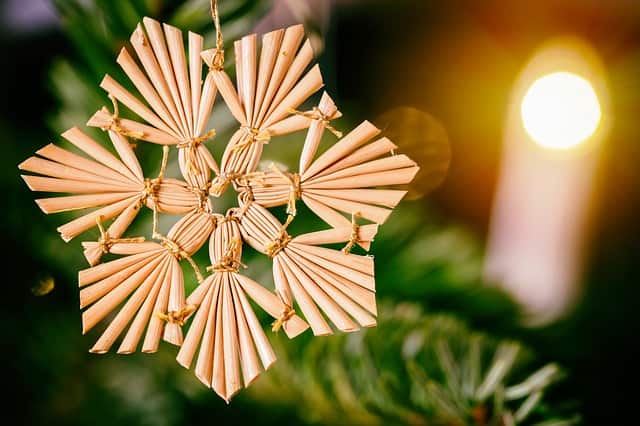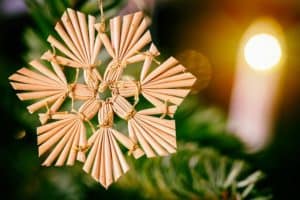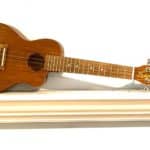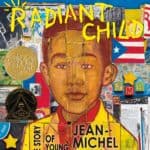
24
DecMerry Christmas Eve
 Growing up, I celebrated typical American Christmases in many ways. We put up a colorful tree with lights and garland, hung stockings over the fireplace, and put out cookies for Santa and carrots for his reindeer. Fortunately, I never ended up on the naughty list, so Santa showed up every year in the middle of the night leaving an abundance of gifts for me to find in the morning. Sure, being raised Christian I tried to keep in mind the “true meaning of Christmas,” but as a kid I was more excited about the toys and the annual claymation specials on tv.
Growing up, I celebrated typical American Christmases in many ways. We put up a colorful tree with lights and garland, hung stockings over the fireplace, and put out cookies for Santa and carrots for his reindeer. Fortunately, I never ended up on the naughty list, so Santa showed up every year in the middle of the night leaving an abundance of gifts for me to find in the morning. Sure, being raised Christian I tried to keep in mind the “true meaning of Christmas,” but as a kid I was more excited about the toys and the annual claymation specials on tv.
In other respects, as the only Lithuanian-American member of my peer group, I had quite a unique Christmas. December 25th may have been an exciting day because of the goodies under the tree, but my family really celebrated on Christmas Eve. The holiday and corresponding meal called Kūčios began after dark and my extended family gathered at the Cape Cod home of my grandmother, uncle and aunt for what was my favorite night of the year.
The elders spoke Lithuanian or spoke to the kids in broken English, while the younger generations and their non-Lithuanian guests only spoke English. I loved hearing the language I couldn’t understand and seeing the distinctive traditional artwork adorning the walls and shelves. The Christmas tree included uniquely Lithuanian ornaments made of straw. Strangely enough, I especially enjoyed the meal, which wasn’t the case for many of the younger attendees; I was always an adventurous eater.
For the first course my aunt brought out beet and mushroom soup. My grandmother (močiutė) said grace and addressed the family in her native tongue, often getting a little choked up, and then we “broke bread.” Everyone got a thin white wafer (plotkelės, or dievo pyragai), like the Eucharist, but bigger and rectangular, with a decorative Christmas image embossed on it. Each person had to greet every other person, and break off a piece of their wafer while wishing them well, usually with a “Merry Christmas” and kiss on the cheek. After making the rounds, you dropped all of the little wafer pieces into the soup like croutons and commenced with feasting.
The Kūčios meatless meal traditionally featured twelve fish dishes, representing the twelve apostles (I have also heard thirteen, for the apostles plus Jesus). I don’t think my family counted the dishes, but we did commit to seafood and side dishes only, including many items I only encountered once a year. I remember smoked eel and pickled herring, smelts and vinegretas, a potato salad with beets. The only dish I never had the courage to try involved some kind of fish suspended in clear gelatin. Over the years with more fussy children in attendance and fewer diners from “the old country” the meal became more Americanized, allowing for cocktail shrimp, smoked salmon, and miniature tuna fish sandwiches. I vaguely remember poppy milk and sour cranberry pudding (kisielius), and long for močiutė’s famous Napoleon Torte, which seemed like it had a hundred layers.
Indeed, many traditions faded over the years and generations. According to The Christmas Encyclopedia, anyone who did not try each dish would risk death in the next year, and food was to remain left out overnight for the spirits of the deceased. I had never heard these grim superstitions and we also never set an empty place with a candle for those who passed away during the year, but we do continue to place a bit of hay under the tablecloth symbolizing the manger. The encyclopedia also claims that Kūčios involves no alcoholic beverages, but I distinctly remember bottles of vodka for the grownups at the dinner table. Other seasonal and likely homemade spirits included Krupnikas, a spiced honey liqueur.
The evening ended with midnight mass, not at a Lithuanian church but in my hometown at the fully American church nearby. When I started working at the library I discovered that colleagues of mine had been parishioners at a Lithuanian church right here in Norwood. I learned a bit about Saint George Catholic Church and the town’s Lithuanian population from the book Lithuanians of Norwood, Massachusetts: A Social Portrait in a Multi-Ethnic Town and a documentary entitled St. George: A Community History.
The church was founded in 1915 by Lithuanian immigrants and held masses in English and Lithuanian, in addition to a few other languages spoken by local ethnic groups. According to the church’s Six-Year Report: 1982-1988, it hosted events celebrating St. Casmir and Lithuanian independence, and held Baltic holocaust observances. It served as a gathering place for the Knights of Lithuania, and offered secular events such as polka parties. For 21 years William Wolkovich-Valkavičius, affectionately known as Father Bill, oversaw the parishioners as Pastor, until the church closed in 2004. Unfortunately, Archbishop Seán O’Malley required St. George’s to shutter its doors when child sexual abuse cases resulted in the sale of real estate to pay for claims against the Archdiocese of Boston.
Eventually St. George’s became condominiums, and Father Bill passed away, as did the elders of my own family. Unlike my siblings, cousins and I, my niece and nephews and their children are only a fraction Lithuanian, and we depart from the traditions I fondly remember as time goes on. Of course we form new traditions, albeit more Americanized, but I will always treasure the memories of our Lithuanian Christmas Eves.
I wish everyone happy holidays, a merry Christmas, and linksmų Kalėdų.
Lydia Sampson is the Assistant Director at the Morrill Memorial Library in Norwood, MA. Look for her article in the December 23, 2020 issue of the Transcript and Bulletin.








